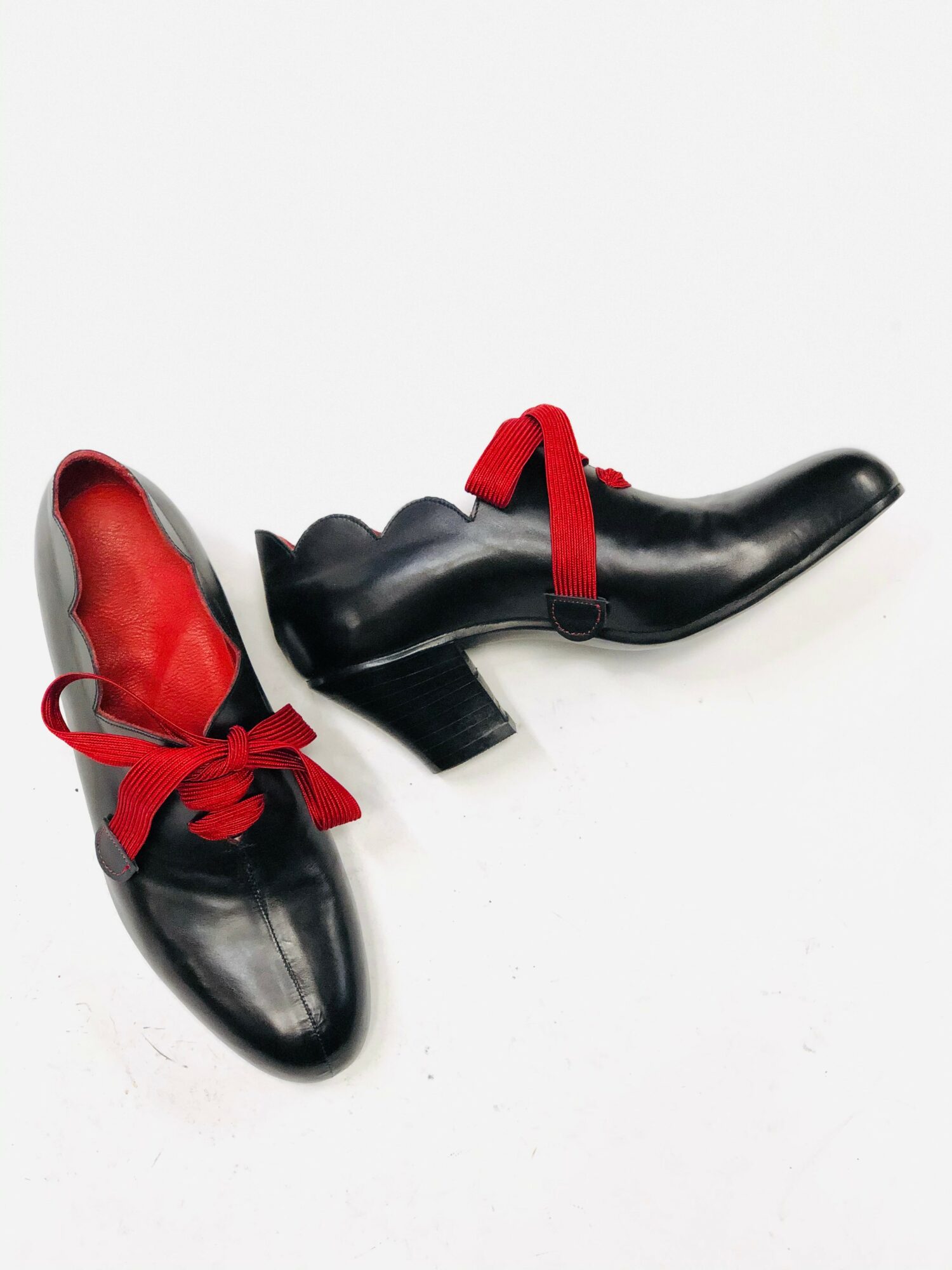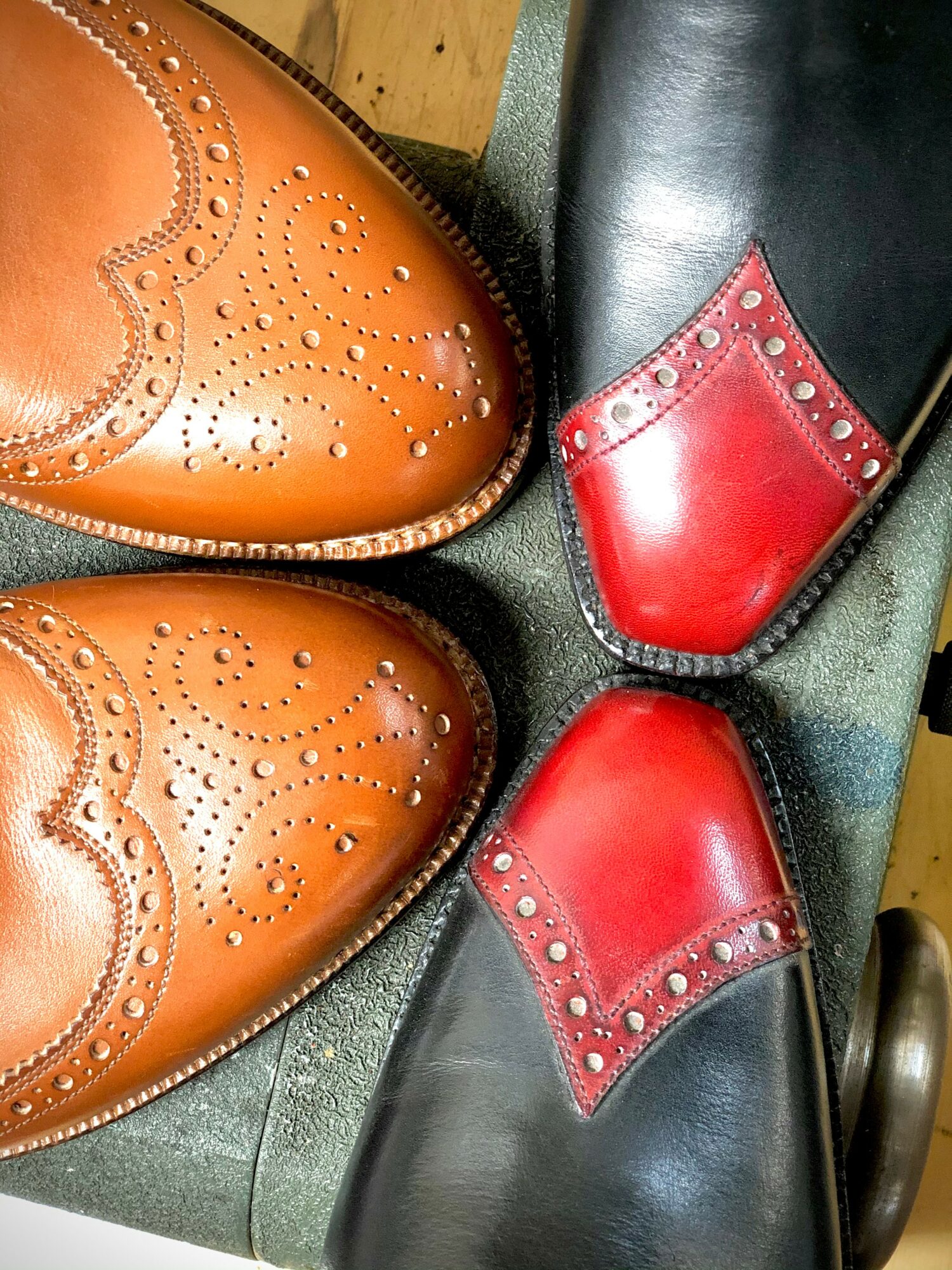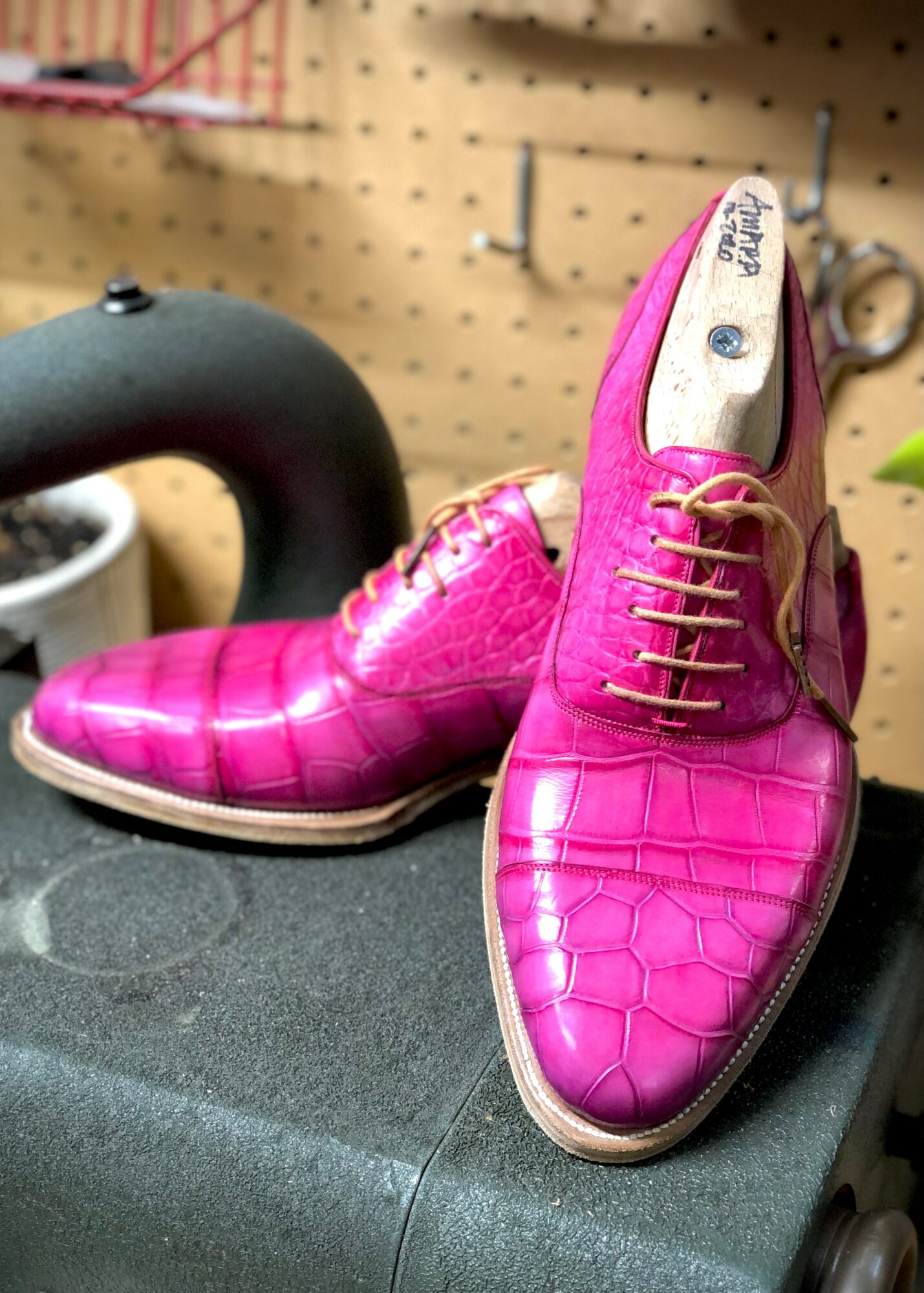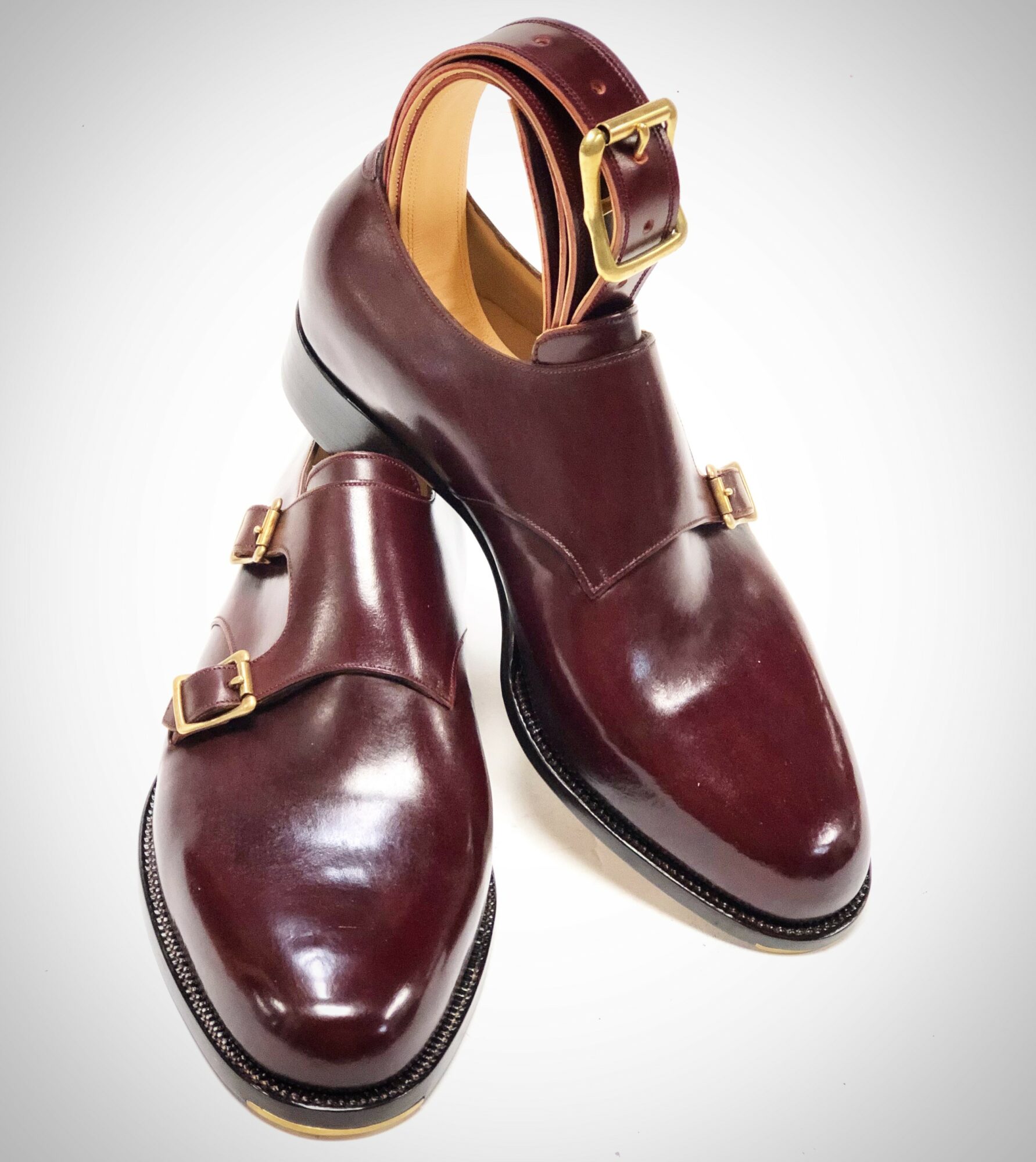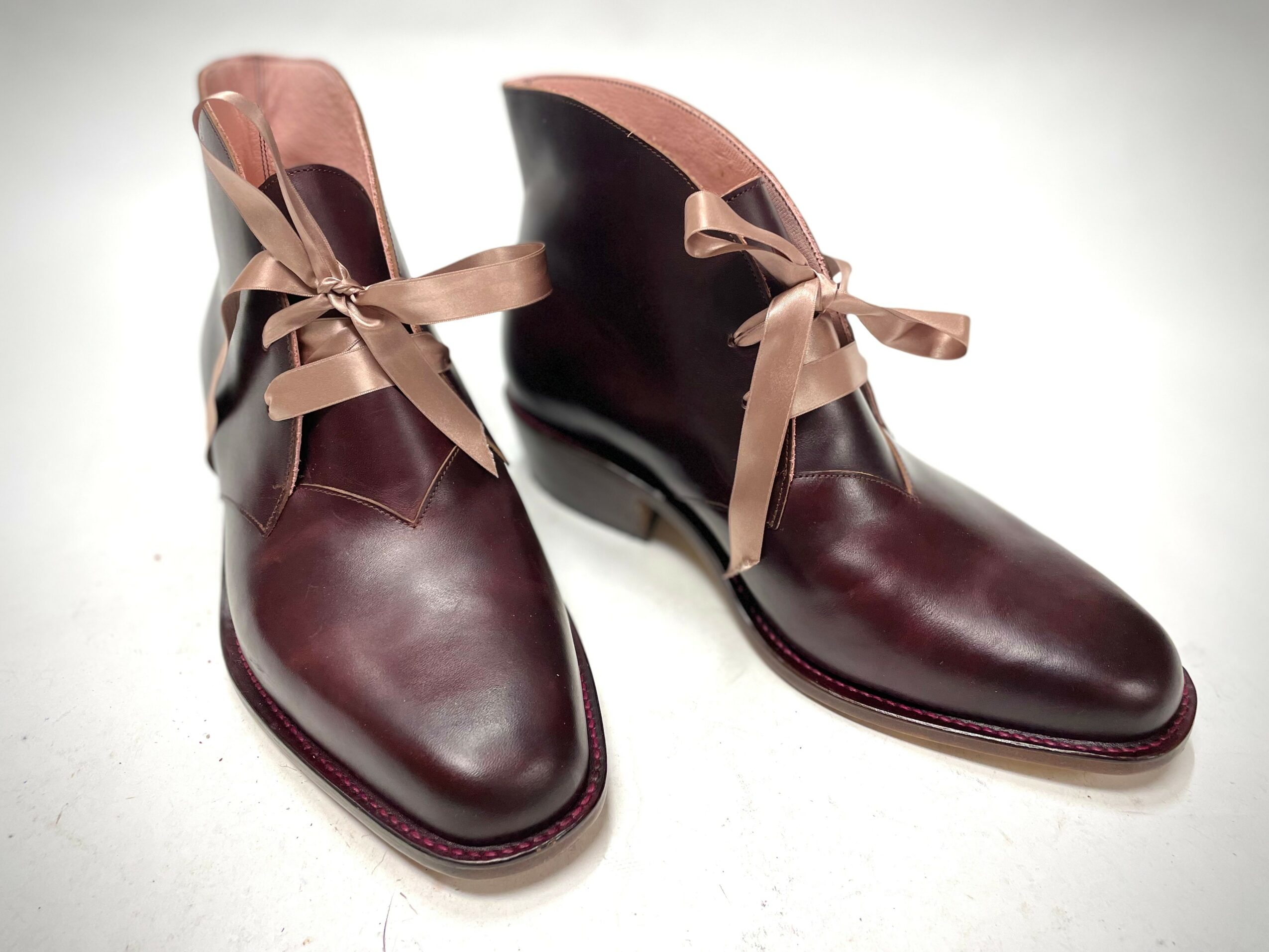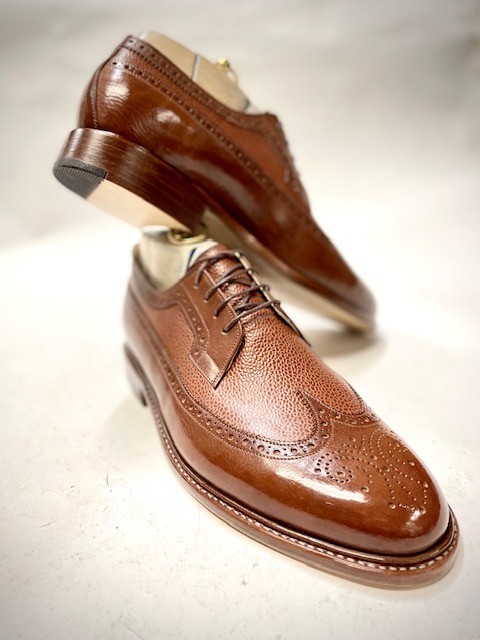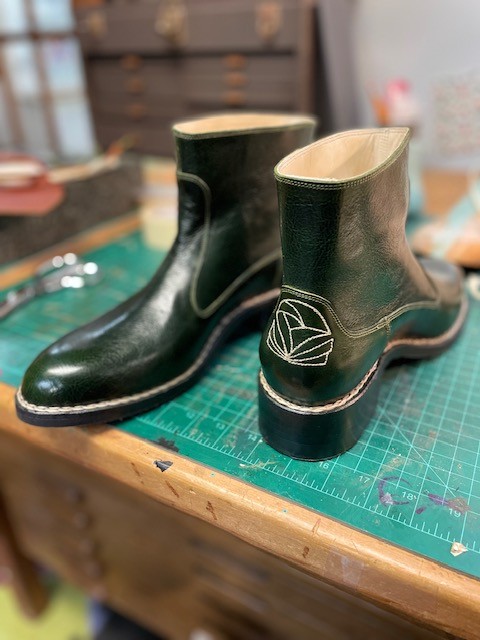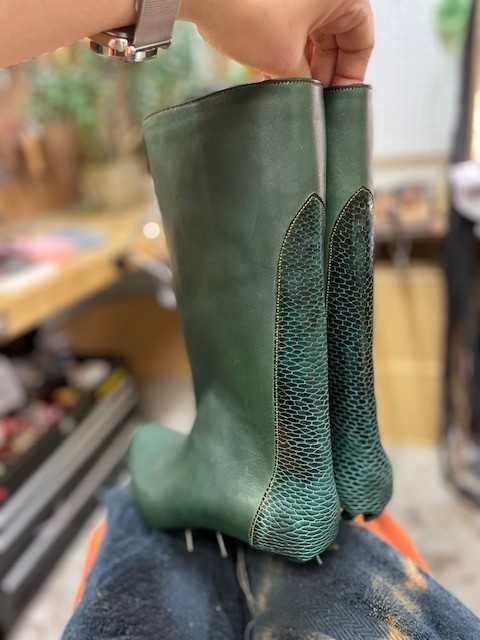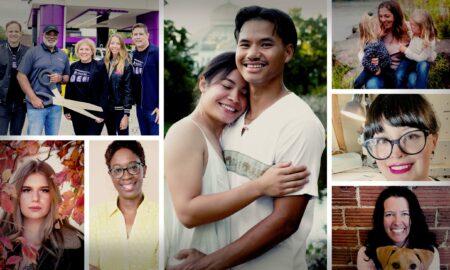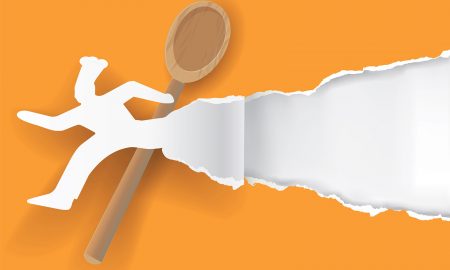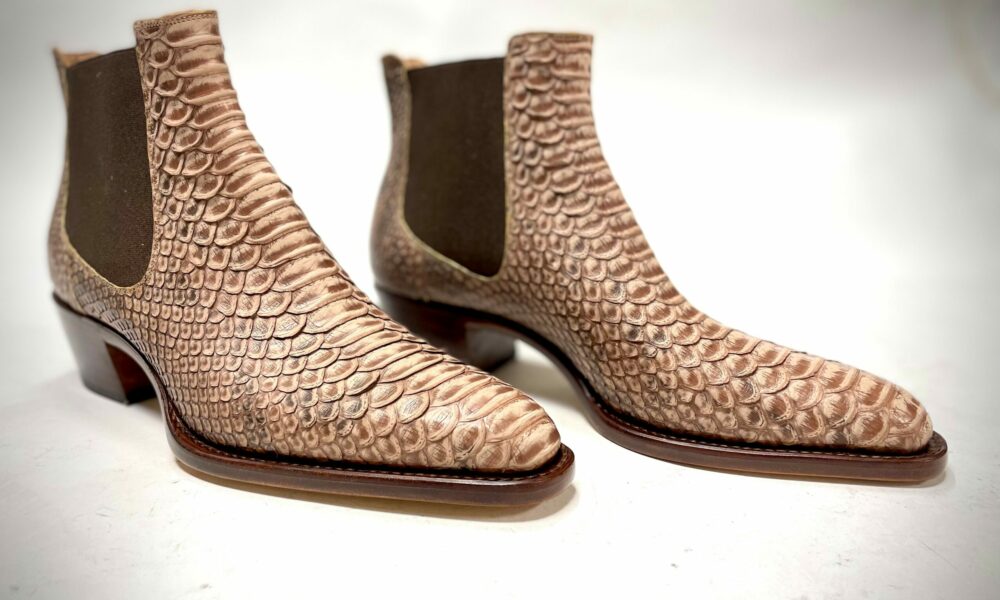

Today we’d like to introduce you to Amara Hark-Weber.
Hi Amara, can you start by introducing yourself? We’d love to learn more about how you got to where you are today.
The actual story of how I started is a bit dramatic. When I started, I was in my third year of an MFA program and had just been in a major car accident and had a serious head injury. I lost much of my long-term memory and had impaired short-term memory.
I couldn’t read and had problems with language – a lot of cognitive issues. I signed up for a shoemaking class because it was so different from what I was in school for, graphic design. I built my first “collection” of shoes as conceptual studies of injury and recovery. They were shoes that inhibited one’s ability to walk. At the time, I wasn’t able to use language to describe what was going on with my injuries, so it was an outlet for personal expression.
When I finished school, I thought that the world had plenty of graphic designers, but not so many shoemakers, so I went to learn from cowboy boot maker DW Frommer who was one of the only working shoe/boot makers that I could find who also taught. I took what I learned from him about boot making, and what I had learned about fashion shoes, and made boots here in the Twin Cities. But, I quickly realized how limited my knowledge and skills were, and how much more I needed before really calling myself a shoemaker.
I next went to Sweden to learn from Janne Melkersson to improve my welting and learn a bit about menswear. I then came home and worked for a year or two building up skills and questions, and making many problems that needed answering. Once I felt like I was at a wall again, I went to Marcell Mrsan, who taught me a lot about patterning, construction, and styling. I am always learning, which is one of the exciting and frustrating things about this job.
We all face challenges, but looking back, would you describe it as a relatively smooth road?
Working as a full-time craftsman means both acquiring professional-level building skills, as well as figuring out how to run a small business. The raw materials to make shoes, i.e. leather, are quite expensive, and it takes a surprising amount of time to complete a pair.
There has been a steep learning curve in figuring out fair pricing, and also the timeline of my waitlist, which hovers between 6-12+ months. This job is truly a labor of love, and I feel incredibly lucky to have had the support of clients for more than a decade.
Alright, so let’s switch gears a bit and talk business. What should we know about your work?
There are very few shoemakers in the United States, so it is unusual and special that Minnesota is home to one of them. My work is commission-based, so I work with individual clients to design each pair, and they are tailor-made for their bodies.
Because of this, I have a very eclectic range of styles — probably more than most shoe or boot makers. I make everything from pull-on boots to hand-sewn men’s formal wear and pride myself on the use of unusual and special leathers. I always say that no two pairs are the same. I make everything for each pair by hand in my St Paul workshop.
Before we let you go, we’ve got to ask if you have any advice for those who are just starting.
I am glad I didn’t know how tough this job would be when I started. I was determined, hard-headed, and had no idea what I didn’t know, which was a blessing.
For those starting, I would say: jump in! Don’t be afraid to ask questions, and don’t expect to make money. Value in this job is about making beautiful built objects and helping folks feel good in and about their bodies.
Pricing:
- Average Price: $2500
Contact Info:
- Website: www.harkweberstudio.com
- Instagram: @harkweberstudio
